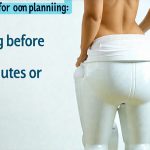Bladder health is often overlooked until something goes wrong—a sudden urge, frequent trips to the bathroom, or even discomfort. We tend to take for granted this essential bodily function, assuming it will simply work without much conscious effort on our part. However, just like any other aspect of our well-being, proactive steps and small lifestyle adjustments can significantly impact bladder health, preventing issues down the line and improving overall quality of life. Often, these aren’t dramatic changes requiring extensive effort; instead, they are subtle habits woven into daily routines that collectively offer substantial benefits.
The good news is you don’t need to overhaul your entire life to support a healthy bladder. Many effective strategies revolve around mindful practices and simple behavioral modifications. This isn’t about restrictive diets or rigorous exercise regimes (though those can certainly contribute to overall health); it’s about understanding how daily choices impact this vital organ, and making small, sustainable adjustments that lead to long-term positive outcomes. It’s about empowering yourself with knowledge and taking control of your bodily functions – a key component of holistic wellness.
Hydration Habits: More Than Just Eight Glasses
Hydration is the cornerstone of bladder health, but it’s not as straightforward as simply drinking eight glasses of water a day. The type of fluids you consume, when you drink them, and how much are all important factors. Many people mistakenly reduce their fluid intake fearing increased bathroom trips, which can actually be counterproductive, leading to concentrated urine that irritates the bladder lining. The goal isn’t to minimize water; it’s to optimize hydration.
A more nuanced approach involves spreading your fluid intake throughout the day rather than gulping large amounts at once. This provides a consistent level of hydration without overwhelming the bladder. Consider carrying a reusable water bottle as a visual reminder and sipping on it regularly. Beyond water, include hydrating foods in your diet – fruits like watermelon and cucumbers are excellent choices. Be mindful of beverages that can irritate the bladder, such as caffeinated drinks, alcohol, and carbonated sodas; these may need to be limited or avoided depending on individual sensitivity.
It’s also important to understand that hydration needs vary based on activity level, climate, and overall health. Someone exercising vigorously in hot weather will require significantly more fluids than someone with a sedentary lifestyle in cooler temperatures. Listening to your body’s signals—thirst being the primary indicator—is crucial, but proactively maintaining consistent hydration throughout the day is even better. Don’t wait until you feel thirsty; that’s already a sign of mild dehydration.
Pelvic Floor Exercises: Strengthening the Support System
The pelvic floor muscles play a critical role in bladder control and overall urinary function. These muscles support the bladder, uterus (in women), and rectum, working together to maintain continence. Weakened pelvic floor muscles can lead to stress incontinence – involuntary urine leakage during activities that increase abdominal pressure like coughing, sneezing, or exercise—and other bladder-related issues. Fortunately, strengthening these muscles is achievable through targeted exercises.
Kegel exercises, named after Dr. Arnold Kegel who popularized them in the 1940s, are a simple yet effective way to strengthen the pelvic floor. To perform a Kegel:
1. Identify your pelvic floor muscles – imagine you’re trying to stop the flow of urine midstream (though don’t practice stopping and starting while urinating regularly, as this can be detrimental).
2. Contract these muscles for 3-5 seconds.
3. Relax for an equal amount of time.
4. Repeat 10-15 times.
Consistency is key; aim to incorporate Kegel exercises into your daily routine – while waiting in line, watching TV, or even during work breaks. It’s important to note that results may not be immediate, but with regular practice, you should notice improvement over time. There are also resources available online and from healthcare professionals demonstrating correct form to ensure you’re targeting the right muscles effectively.
Pelvic floor exercises aren’t just for women; men can benefit equally. Prostate surgery or other factors can weaken pelvic floor muscles in men, leading to urinary incontinence. Strengthening these muscles is a proactive step towards maintaining bladder health and confidence. It’s also important to avoid straining during bowel movements, as this puts undue pressure on the pelvic floor.
Bathroom Habits: Timing and Complete Emptying
Our bathroom habits often become ingrained patterns, but modifying them can have significant benefits for bladder health. One common mistake is rushing to the bathroom or feeling embarrassed about taking enough time to fully empty your bladder. This can lead to incomplete emptying, which increases the risk of urinary tract infections (UTIs) and other complications.
Take your time when urinating. Relax, allow yourself sufficient privacy, and avoid distractions. Leaning forward slightly while sitting on the toilet can also help facilitate complete emptying. Avoid pushing or straining; let gravity and relaxation do their work. If you consistently experience difficulty fully emptying your bladder, consult a healthcare professional to rule out any underlying issues.
Another important habit is timed voiding. This involves urinating at regular intervals throughout the day, even if you don’t feel an immediate urge. This helps train your bladder to hold more urine and reduces the frequency of urgent trips to the bathroom. Start by establishing a schedule based on your typical urination patterns, gradually increasing the time between voids as your bladder capacity improves. Avoid holding urine for excessively long periods, as this can also be detrimental. Aim for a balance between regular emptying and avoiding prolonged retention.
Dietary Considerations: Avoiding Bladder Irritants
Certain foods and beverages are known to irritate the bladder lining, exacerbating symptoms of urgency or frequency. Identifying and minimizing these irritants is an important aspect of supporting bladder health. While individual sensitivities vary, some common culprits include:
- Caffeine
- Alcohol
- Carbonated beverages
- Spicy foods
- Acidic fruits (citrus fruits, tomatoes)
- Artificial sweeteners
This doesn’t necessarily mean eliminating these items entirely; it’s about being mindful of your consumption and observing how they affect your bladder. Keeping a food diary can help identify potential triggers. Experiment with reducing or eliminating specific foods for a period to see if your symptoms improve. Dietary changes should be approached as individual adjustments, based on personal tolerance.
Beyond avoiding irritants, incorporating anti-inflammatory foods into your diet may offer additional benefits. Foods rich in antioxidants and omega-3 fatty acids—such as berries, leafy greens, and fatty fish—can help reduce inflammation throughout the body, including the bladder. Maintaining a balanced diet that supports overall health is crucial for optimal bladder function. Remember to consult with a healthcare professional or registered dietitian for personalized dietary advice.
These small habits, consistently practiced, can make a world of difference in your bladder health and overall well-being. They’re not about deprivation or restriction; they’re about mindful choices and proactive care – empowering you to take control of your body and enjoy a more comfortable, confident life.





















